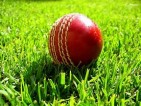A look back at South Africa’s 93/94 Test tour of Australia
Marco Trevisiol |South Africa’s first Test tour to Australia since their readmission in the 1993/94 season was greatly awaited by Australian cricket fans for multiple reasons. A prime reason was because of how well they’d performed when they visited Australia in 1991/92 for the one-day World Cup, highlighted by their convincing win over Australia.
As well, the post-WSC cricket era in Australia over the previous 15 years had seemed to consist of the West Indies & England touring every season and South Africa – who hadn’t toured Australia since 1963/64 – were a breath of fresh air in that regard. And the series didn’t disappoint.
The Test series started off badly in the Boxing Day Test in Melbourne as inclement weather totally ruined the match, with only 230 overs being bowled. The most significant event of the match was that it was the beginning of Australia’s leg-spinner Shane Warne’s publicly antagonistic rivalry with South African batsman Darryl Cullinan. While Warne didn’t dismiss him in this match (paceman Craig McDermott dismissed him for a duck) he would torment him constantly throughout the 1990s.
Thankfully the weather stayed fine during the new year Sydney Test as it allowed one of the best Test matches of the 1990s to occur.
On the first day it appeared Australia had the decisive advantage as they skittled South Africa for just 169, mainly down due to the brillance of Warne who took 7 wickets. While Warne had already made a significant impact in Tests to this stage, most of them had been done overseas and seeing him live dismantle a batting lineup brought home to Australian cricket fans how great he was going to be. And it wasn’t just the amount of wickets he took this day it was the style in which he did it – bamboozling batsmen with flight, with flippers or bowling them around their legs enthralled those who had seen relatively little quality leg-spin over the previous couple of decades.
But while South Africa had a dreadful first day, they were fighters and they worked extremely hard to drag themselves back into the match against a strong Australian side. Australia’s 1st innings of 292 took a painstaking 141 overs as they had to work for every run; even the normally dashing opener Michael Slater took over 6 hours to score 92.
But despite their best efforts in the field and an improved batting effort in the 2nd innings, South Africa looked doomed when midway through the 4th day they were 9 wickets down with just an 80 run lead. Jonty Rhodes and tailender Allan Donald added 36 runs for the last partnership which seemed academic but as it turned out was vital in how the match would turn out.
Australia needed just 117 to win, but after their failure to chase 186 to win a series against the West Indies less than 12 months before, the side probably would’ve preferred to have been chasing 250. On the 4th evening when they theoretically could’ve chased down the target that night, they instead inched along to 1/51 before three late wickets gave South Africa some home.
Things quickly got worse the following morning when Australia’s leader and long-time stoic presence, Allan Border, was bowled without playing a shot in the opening over. From there Australia’s innings totally disintegrated with even a needless run-out thrown in. It was left to tailender Craig McDermott (who almost got Australia over the line against the West Indies in the short run chase 12 months prior) to show the attitude so badly lacking amongst the top order. He counterattacked to score 29 off just 38 deliveries in an innings that had a run rate of less than 2.
Alas, it was all in vain as South Africa had a major triumph when they won the match by 5 runs. The hero for South Africa was their pace bowler Fanie De Villiers who bowled unchanged throughout the final day in a remarkable display of stamina and determination; it was most appropriate that not only did he get the final wicket, but that he caught it as well.
The final Test in Adelaide had a memorable conclusion but for large chunks of it was a dour affair. Truth be told, as competitive and hard-fought Australia/South Africa Tests often were in this era, they tended to be on occasion stodgy affairs with defensive mindsets and low scoring; Allan Border’s final Test in South Africa is probably the clearest example of this.
For the first 11 sessions of the Adelaide Test the match seemed to be going nowhere fast. Australia batted first and led by Steve Waugh’s 164, scored a substantial 469. But they took 164 overs for it, batting into the final session of Day 2. South Africa – only needing a draw for their first ever series win in Australia – seemed perfectly happy to play for a draw as by tea on Day 3 they’d crawled to 2/173. Even Warne for once was unable to make an impact.
However again it was Steve Waugh who starred by utilising his medium-pacers on an Adelaide pitch and its tendency to keep low as a Test progressed by bowling stump-to-stump and 4 wickets in a session (all LBW or bowled) resulted. It was the pivotal session in the match.
As per usual South Africa weren’t going to give up without a fight. They managed to squeak past the follow-on target, ensuring Australia had to bat again. Having to bat almost four sessions to save the game, South Africa started disastrously and were 3 wicket s down at stumps on the 4th day with Warne already weaving his magic on a wearing pitch. Surely South Africa couldn’t escape defeat this time.
But for a long time on the 5th day it appeared they would through a most unlikely source. Not only was Fanie De Villiers the nightwatchman not expected to last long, but he’d suffered a broken thumb from a Craig McDermott delivery. Against all odds, he and Peter Kirsten survived for the first three hours of the final day and an even bigger miracle than Sydney looked possible.
But once De Villiers was dismissed, the South African batsmen fell away quickly surrounded by controversy with the South African unhappy with several LBW decisions throughout the match. It led to Peter Kirsten being sanctioned for two separate incidents of disputing an umpire’s decision.
But South Africa couldn’t blame the umpires on all occasions. Just before Tea the hapless Cullinan ducked a bouncer from McDermott but left his bat up like a periscope. The ball hit the bat and wicketkeeper Ian Healy took a superb catch to ensure Cullinan’s series ended just as badly as it started.
Oz won early in the final session with Warne and McDermott leading the way. But the undoubted Man Of The Match was Steve Waugh who was so impressive that he managed to also win Man Of The Series… despite only playing one of the three Tests!
As for South Africa, what was decisive in this match was that they had a clear deficiency in the spin department compared with Australia and – perhaps more significantly – they came into the match with a negative mindset seemingly only wanting to draw from ball one. This timidity would make itself known in future Test tours of Australia.
Overall, despite rain ruining one Test, this Australia/South Africa series was a great success with Australian cricket fans knowing now that a tour by South Africa would be a marquee series to look forward to in years to come.





Leave a comment